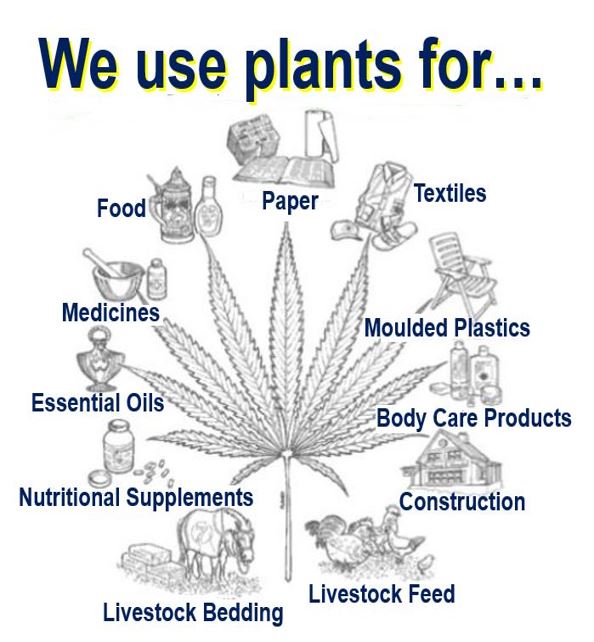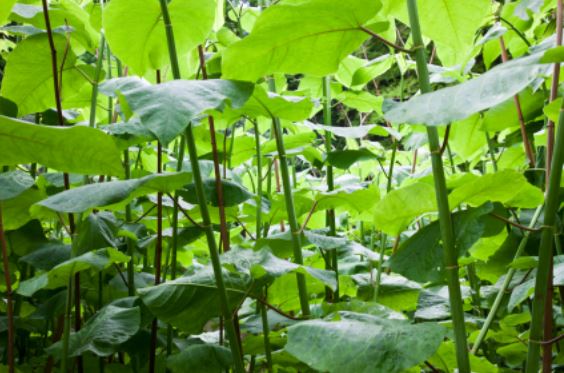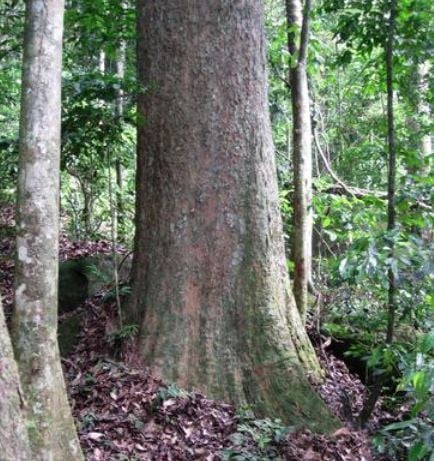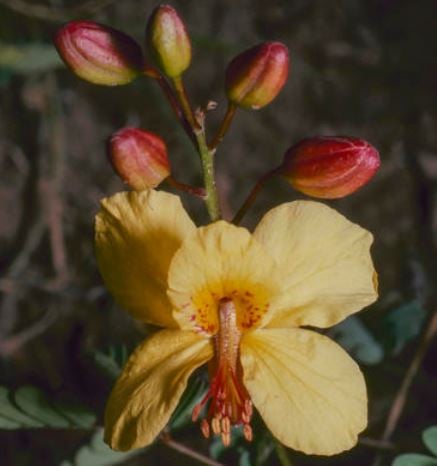Over one in five plants globally is currently threatened with extinction, says a new report published by the Royal Botanical Gardens, Kew, UK. Its authors say the main causes of the plants’ deteriorating survival status are diseases, climate change, invasive plants and land-use change.
Wildlife biodiversity is being further undermined by international trade in endangered plants, the Royal Botanical Gardens (ROB) adds, emphasizing the importance of strict enforcement of international legislation.
The Report, titled – State of the World’s Plants 2016 – also lists which parts of the globe should be the focus of special attention because of their spectacular plant diversity.
 Plants have a wide range of uses for humans. (Image: image.slidesharecdn.com)
Plants have a wide range of uses for humans. (Image: image.slidesharecdn.com)
There were 391,000 different plant species on our planet at the beginning of this year, of which 369,000 were flowering plants, the authors wrote, adding that their assessment is the first to take into account all of Earth’s flora.
Habitat changes, including the alarming loss of mangroves and swamps, literally represent the kiss of death for hundreds of plant species. The survival status of thousands of different plant types is also being detrimentally affected by pests, diseases, and climate change.
How is climate change affecting our plants?
Data on how climate change is affecting the world’s plants is patchy. While the effects in Europe, North America, Japan and Australasia are well researched, in other ‘vast areas’ we know very little. The authors stressed that it is crucial that extensive research is carried out in the areas where data is scarce.
In North America and Europe, researchers have reported that plants are flowering at different times of the year, species are migrating geographically, and turnover in plant communities in warming climates is changing.
 Droughts and other extreme weather events are occurring more often and more severely, summers are becoming warmer and longer, winters are milder, all these phenomena are cause by human-induced climate change. (Image: adelaide.edu.au)
Droughts and other extreme weather events are occurring more often and more severely, summers are becoming warmer and longer, winters are milder, all these phenomena are cause by human-induced climate change. (Image: adelaide.edu.au)
The authors wrote:
“All but one of the world’s biomes have experienced more than 10% change in land-cover type in the past decade due to the combined impacts of land-use and climate change.”
The effects of invasive plant species and diseases
An invasive species is one that is not native to a specific location – it has a tendency to spread to a degree believed to cause damage to native plants (the environment), human health or human economy.
There is today a large international movement of alien plant species underway. There are about five thousand species that are currently documented as invasive in worldwide surveys.
These invasive species are thriving – spreading at the expense of native plants – disrupting local ecosystems, transforming land cover, and in many cases causing significant economic losses.
The most ‘successful’ invasive species are those which have the ability to prevail even when conditions are hostile – they can survive as seeds, rhizomes, bulbs and root buds.
According to the Royal Horticultural Society (RHS), clearing London’s Olympic site of Japanese knotweed (Fallopia japonica or Reynoutria japonica) cost an estimated £70 million ($101 million). Approximately sixty percent of invasive plants in the UK come from horticulture.
 Japanese Knotweed is a non-native invasive species of plant which has become common throughout the United Kingdom. It is today illegal to spread or plant KJW. It was brought to the UK by the Victorians as an ornamental plant. (Image: landscapingandweedcontrol.co.uk)
Japanese Knotweed is a non-native invasive species of plant which has become common throughout the United Kingdom. It is today illegal to spread or plant KJW. It was brought to the UK by the Victorians as an ornamental plant. (Image: landscapingandweedcontrol.co.uk)
In many countries, including the UK, it is a criminal offence to plant a non-native invasive species in the wild, or cause it to grow in the wild.
The Royal Horticultural Society writes:
“Many naturalised species do not present a problem but some that spread and outcompete native species can threaten ecosystems, habitats or native species – resulting in environmental or economic damage. These are considered to be invasive either due to lack of natural control mechanisms (such as predators); rapid rate of spread (by seed or vegetatively) or suppression of other species (such as allelopathy – as with black walnut – or competition for resources).”
Across the world, many new plant diseases are emerging – they are caused by fungal, bacterial or viral pathogens. Even though there is a great deal of research currently underway to combat or prevent these diseases, most of the efforts are focused on protecting plant species in the world’s wealthiest nations.
Thousands of new plant species discovered annually
Scientists discovered 2,034 new plant species globally just in 2015. Examples include Selenipedium dodsoniia, a 3-metre-long (9.84 feet) slipper orchid from Ecuador, and Gilbertiodendron maximum, which can reach a length of 45 metres (147.6 feet), has a mass of about 105 tonnes, and is endemic to Gabon in West Africa.
 The trunk of Gilbertiodendron maximum in the forests of Gabon, probably the largest and heaviest organism new to science in 2015. (Image: kew.org. Credit: J.van Veldhuizen)
The trunk of Gilbertiodendron maximum in the forests of Gabon, probably the largest and heaviest organism new to science in 2015. (Image: kew.org. Credit: J.van Veldhuizen)
A new type of sweet potato was discovered in 2015 by scientists at Royal Botanical Gardens, Kew. The plant is from the Ipomoea genus (Convolvulaceae family) and appears to be resistant to many diseases which currently can devastate commercial species of sweet potato. They hope it can be used to create disease-resistant crops.
A relative of the custard apple (sugar apple) was discovered in Indonesia/Malaysia, as well as ylang-ylang, which according to organicfacts.net has several health benefits. Ylang-ylang Essential Oil is said to be an effective nervine, antiseptic, antidepressant, aphrodisiac, hypotensive and sedative substance.
Regarding new plant species in 2015, Kew wrote:
“2015 was a fantastic year for Kew Science: discovering and collecting new species and exploring their evolutionary relationships, uses and conservation. 2016 promises to be an even more prolific year, as Kew scientists push the frontiers of discovery and continue to work towards an exciting scientific strategy and vision.”
 Arquita ancashiana, a new genus of legume shrub from the Andes mountain range in South America. (Image: kew.org. Credit: G. Lewis)
Arquita ancashiana, a new genus of legume shrub from the Andes mountain range in South America. (Image: kew.org. Credit: G. Lewis)
What are plants used for?
We use plants as food for humans and animals, making medicine, medical devices (e.g. bandages), fuels, poisons, materials (e.g. for making clothes), and writing & drawing utensils (ink, pencils and paper). They also have social uses – humans smoke tobacco and marijuana – environmental uses, and as a source of genes.
According to the Royal Horticultural Society:
“The relationship between plants and people is a long and continuous one. We need plants for basic human purposes. We eat them in many forms; we make medicines, soaps, furniture, textiles, tyres and much more from them. Plants play a very important role in our lives.
“Although we now live in a highly industrialised society, we have not lost this dependence on plants. We need to be aware of the part that plants play in our lives and must ensure that we care for these plants to continue this long relationship.”
There are over thirty-one thousand plant species that we use for something, documents show.
A further 3,546 species have been prioritised for collecting and preservation in various gene banks across the world. These plants, from a wide range of geographic and ecological locations, give us a pool of genetic variation that is crucial for global food security.
More money needs to be spent building up these collections in global gene banks, such as Kew’s Millennium Seedbank, the authors said.
Video – One fifth of plant species face extinction
A comprehensive global assessment of our planet’s flora by the Royal Botanic Gardens in Kew, UK, released on 9th May, says 21% of all plant species are at risk of extinction.
